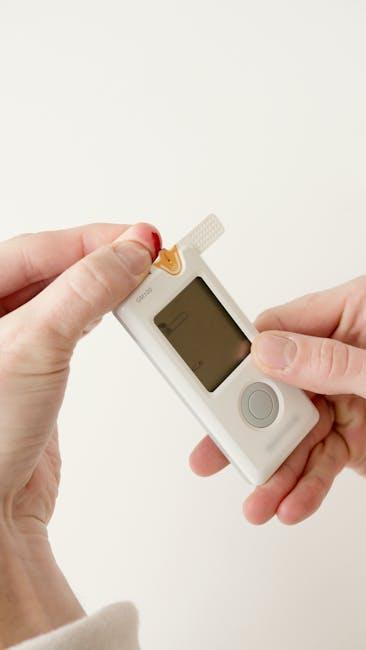
Understanding Normal Blood Sugar Levels 1 Hour After Eating: What You Need to Know
Maintaining normal blood sugar levels is crucial for overall health and well-being. When we eat, our body breaks down carbohydrates into glucose, which is then released into the bloodstream. Insulin, a hormone produced by the pancreas, helps regulate blood sugar levels by allowing glucose to enter cells for energy or storage. However, if blood sugar levels rise too high or drop too low, it can lead to serious health complications.
What Are Normal Blood Sugar Levels 1 Hour After Eating?
Normal blood sugar levels 1 hour after eating can vary depending on individual factors such as age, weight, activity level, and overall health. However, in general, blood sugar levels should not exceed 180 mg/dL one hour after a meal. Ideally, blood sugar levels should return to pre-meal levels (typically between 80-130 mg/dL) within two hours after eating.
It’s important to note that slight fluctuations in blood sugar levels are normal and can be influenced by various factors such as the composition of the meal, the timing of the meal, and individual metabolism. However, consistently high or low blood sugar levels can indicate an underlying medical condition such as diabetes or hypoglycemia.
Understanding the Effects of High Blood Sugar Levels After Eating
When blood sugar levels rise too high after eating, it can lead to a condition known as hyperglycemia. This can occur when the body does not produce enough insulin or becomes resistant to insulin, leading to a buildup of glucose in the bloodstream. If left untreated, hyperglycemia can cause serious health complications such as nerve damage, kidney damage, cardiovascular disease, and diabetic coma.
Symptoms of high blood sugar levels after eating may include frequent urination, excessive thirst, blurred vision, fatigue, and slow wound healing. If you experience any of these symptoms, it’s important to consult with a healthcare professional for proper diagnosis and treatment.
Tips for Managing High Blood Sugar Levels After Eating
There are several strategies you can follow to help manage high blood sugar levels after eating:
1. Choose complex carbohydrates: Opt for whole grains, fruits, vegetables, and legumes instead of refined carbohydrates such as white bread, pasta, and sugary foods. These foods are high in fiber and take longer to digest, helping to prevent spikes in blood sugar levels.
2. Monitor portion sizes: Pay attention to portion sizes and avoid overeating, especially foods high in carbohydrates and sugar. Eating smaller, balanced meals throughout the day can help regulate blood sugar levels.
3. Stay active: Regular physical activity can help improve insulin sensitivity and lower blood sugar levels. Aim for at least 30 minutes of moderate exercise most days of the week, such as brisk walking, cycling, or swimming.
4. Stay hydrated: Drinking plenty of water can help flush out excess glucose from the bloodstream and prevent dehydration. Aim for at least 8-10 glasses of water per day.
Understanding the Effects of Low Blood Sugar Levels After Eating
Low blood sugar levels after eating, also known as hypoglycemia, can occur when blood sugar levels drop below 70 mg/dL. This can happen if you skip meals, eat too little, or take too much insulin or medication. Hypoglycemia can cause symptoms such as sweating, trembling, dizziness, confusion, and irritability.
In severe cases, hypoglycemia can lead to unconsciousness and seizures, requiring immediate medical attention. If you experience symptoms of low blood sugar levels after eating, it’s important to consume a fast-acting carbohydrate such as fruit juice, glucose tablets, or candy to raise blood sugar levels quickly.
Tips for Managing Low Blood Sugar Levels After Eating
To help prevent and manage low blood sugar levels after eating, consider the following tips:
1. Eat regular meals: Try to eat balanced meals at regular intervals throughout the day, including carbohydrates, proteins, and fats. This can help maintain stable blood sugar levels and prevent hypoglycemia.
2. Check blood sugar levels: Monitor your blood sugar levels regularly, especially before and after meals, to track patterns and make adjustments to your diet or medication as needed.
3. Carry snacks: Keep fast-acting carbohydrates on hand in case of a hypoglycemic episode. Examples include glucose tablets, fruit juice, raisins, or crackers.
4. Talk to your healthcare provider: If you’re experiencing frequent episodes of low blood sugar levels after eating, it’s important to consult with your healthcare provider to adjust your treatment plan accordingly.
In conclusion, understanding normal blood sugar levels 1 hour after eating is essential for maintaining optimal health and wellness. By paying attention to your diet, lifestyle, and monitoring blood sugar levels regularly, you can help prevent complications associated with high or low blood sugar levels. If you have concerns about your blood sugar levels or are experiencing symptoms of hyperglycemia or hypoglycemia, don’t hesitate to seek medical advice for proper diagnosis and treatment. Remember, it’s never too late to take control of your health and make positive changes to support your well-being.












